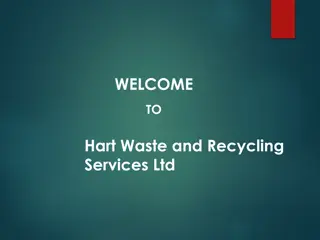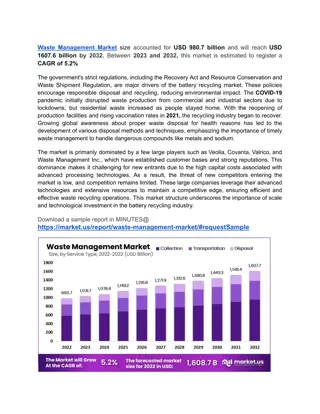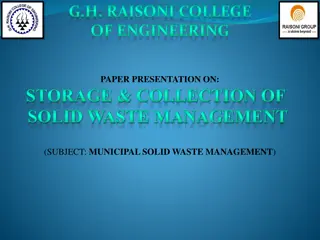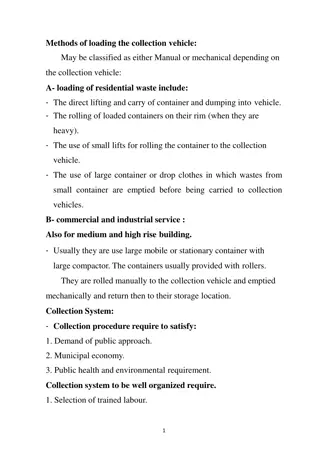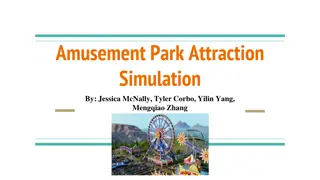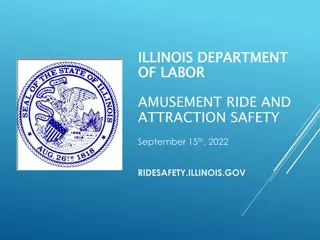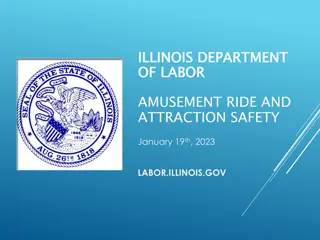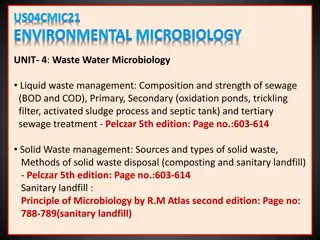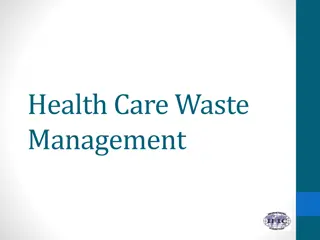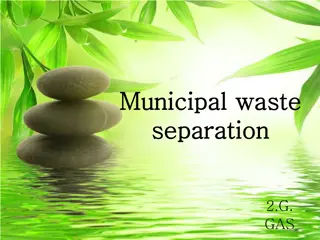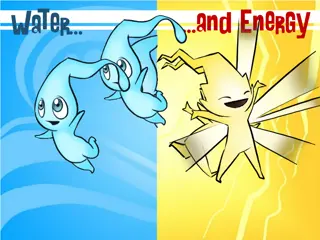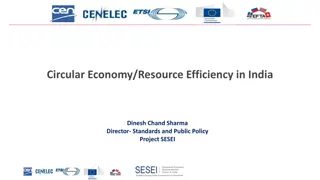Energy Efficiency in Waste Collection at Amusement Parks
Explore the potential for energy efficiency in waste collection at amusement parks, focusing on methods such as vacuum systems and solar-powered compactors. Investigate the impact on costs, emissions, and energy usage to assess sustainability. Utilize catalog resources and background information to further examine this innovative approach.
Download Presentation

Please find below an Image/Link to download the presentation.
The content on the website is provided AS IS for your information and personal use only. It may not be sold, licensed, or shared on other websites without obtaining consent from the author.If you encounter any issues during the download, it is possible that the publisher has removed the file from their server.
You are allowed to download the files provided on this website for personal or commercial use, subject to the condition that they are used lawfully. All files are the property of their respective owners.
The content on the website is provided AS IS for your information and personal use only. It may not be sold, licensed, or shared on other websites without obtaining consent from the author.
E N D
Presentation Transcript
Presented by Carnegie Mellon University Engineering Librarian, Donna Beck for The Seven Steps of the Research Process Summer Engineering Experience for Girls (SEE) 2016. #1 Identify and Develop Your Topic
Hahner, David P. Leo, the Paper-Eating Lion. Kennywood. Portsmouth, New Hampshire: Arcadia, 2004. 22. Print. Energy from the wind? Wow...amusement parks generate a lot of trash every day...where does it go?
By Hanyou23 (Own work) [CC BY-SA 4.0 (http://creativecommons.org/licenses/by-sa/4.0)], via Eating_Lion%2C_Lincoln_Children's_Zoo%2C_Lincoln%2C_Nebraska%2C_USA.jpg Leo, the Paper-Eating Lion https://commons.wikimedia.org/wiki/File%3ALeo_the_Paper- Wikimedia Commons from Wikimedia Commons Amusement parks & my topic Energy related?
Visiting an amusement park Think of your topic in the form of questions my Kennywood experiences Is it energy and cost effective? Are fumes emitted into the atmosphere? How much energy is used to power Leo? How can human power be measured?
State your topic as a question Are vacuums the most energy efficient method to collect trash?
The Seven Steps of the Research Process #2 Find Background Information
Starting point: Background Info Compare to other trash cans Solar Powered Carnegie Mellon University. Pittsburgh, PA. 2016. View of Solar Compactor outside of Wean Hall, Personal photograph by author. JPEG file. Google Images
garbage collection search Encyclopedias
The Seven Steps of the Research Process #3 Use catalogs to find Books and Media (like DVDs)
Use Catalogs like Carnegie Library to find Books and Media
The Seven Steps of the Research Process #4 Use Indexes to Find Articles
Use Indexes to find articles What does this mean? Magazine & journal & newspaper articles find them in RESEARCH DATABASES Academic OneFile GreenFILE
garbage cans built-in vacuum trash bins refuse receptacle
The Seven Steps of the Research Process #5 Find Internet Resources
Try different search engines in addition to Google, like: SciTech Connect Scientific American blogs
The Seven Steps of the Research Process Would you use this photo? Would you use that website? How can I trust this information to be true? # 6 Evaluate What You Find
The Seven Steps of the Research Process MLA format # 7 Cite what you find using a standard format
Works Cited Hahner, David P. Leo, the Paper-Eating Lion. Kennywood. Portsmouth, New Hampshire: Arcadia, 2004. 22. Print. Research & Learning Services, Olin Library, Cornell University Library, Ithaca, NY, The Seven Steps of the Research Process. Web. 11 July 2016. Solar Compactor outside of Wean Hall, Carnegie Mellon University, Pittsburgh, PA. 2016. Personal photograph by author. JPEG file.


